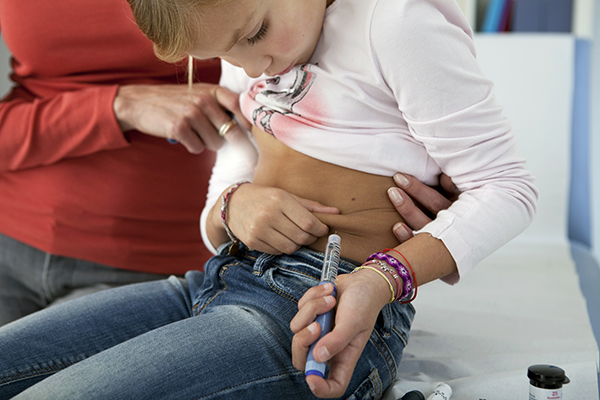A TEDDY progress report, led by USF’s Jeffrey Krischer, shows for the first time that combining genetic and environmental factors substantially increases prediction of future diabetes
TAMPA, Fla. (July 15, 2019) — With the help of children and their families worldwide, scientists continue to identify how genetic and environmental risk factors converge to trigger autoimmunity and progression to type 1 diabetes in some genetically-susceptible youngsters, but not others.
Since The Environmental Determinants of Diabetes in the Young (TEDDY) study began in 2004, this ongoing National Institutes of Health-sponsored consortium has published research examining type 1 diabetes risk factors, including genotypes, sex, family history, genetic variations, diet (including probiotics and types of infant formula), growth in early life, the microbiome, proteomics, metabolomics, age at autoantibody seroconversion, and first-appearing autoantibody. The 8,600 TEDDY-enrolled children across six centers in the U.S. and Europe are monitored for up to 15 years; those who began being followed as infants are currently ages nine to 14.
Now, in a progress report published June 2019 in Diabetes Care, lead author Jeffrey Krischer, PhD, at the USF Health Morsani College of Medicine, University of South Florida, and colleagues evaluate the ability of TEDDY-identified risk factors to predict islet autoimmunity and progression to type 1 diabetes. The researchers found that individually these statistically significant TEDDY risk factors contribute little in discriminating between children who will get the disease and those who will not. However, when combined in a well-designed, time-dependent statistical model, the factors substantially increased the power of predicting both islet autoimmunity and type 1 diabetes.
Dr. Krischer, an epidemiologist and professor in Morsani College of Medicine’s Department of Internal Medicine, leads coordination and analysis of the massive TEDDY data generated globally — from collection of samples (including blood, saliva, urine, toenails, stool and even discarded primary teeth) and careful review of parent diaries on everything from doctor visits to over-the counter medications their children take.
“Earlier studies have identified independent risk factors for type 1 diabetes. But this paper, for the first time, describes a way to combine risk factors that shows their combined power to discriminate between those who will or will not develop autoimmunity and diabetes,” Dr. Krischer said. “It demonstrates how much each risk factor contributed to prediction. This has moved the field from having only a genetic-based risk assessment to one that includes gene-environment interactions.”
Type 1 diabetes is an autoimmune disease in which the immune system destroys insulin-producing pancreatic cells – a process that occurs over months or many years. The presence of autoantibodies (immune proteins) in circulating blood indicates that the body has started to target its own tissues or organs.
TEDDY previously published evidence of two subtypes of type 1 diabetes, each associated with distinct risk factors, which may prove pivotal for future preventive trials. Insulin autoantibodies (IAA) directly attack insulin and appear at an earlier age than glutamic acid decarboxylase antibodies (GADA), the autoantibodies that destroy the enzyme glutamic acid decarboxylase regulating insulin-making cells in pancreatic islets. Most with type 1 diabetes develop one of these autoantibodies first, and many eventually end up with both.
The recently published TEDDY study includes 7,777 children of the original TEDDY cohort, from birth to a median age of approximately 9, for development of islet autoantibodies and progression to type 1 diabetes. A graph plotting time-dependent true positive rates (sensitivity) against false positive rates (specificity) was used to estimate the individual and collective predictive ability of risk factors. Among the findings:
- Human leukocyte antigen (HLA) genotype contributed the most to prediction of IAA appearing first, after family history of type 1 diabetes.
- A child’s weight at age 1 was the best predictor of GADA as the first appearing autoantibodies.
- Age at onset of multiple autoantibodies was the strongest predictor of a child’s progression to type 1 diabetes.
TEDDY’s ultimate aim is to uncover the causes of type 1 diabetes and determine what risk factors might be altered to prevent or delay the condition, which requires life-long dependence on insulin therapy.
“TEDDY is uniquely poised to make this contribution as it adds environmental exposures, pathogens, and extensive genomics to the risk factors identified so far,” Dr. Krischer and his fellow authors conclude. “Going forward, this evaluation framework will serve as a summary tool to evaluate new risk factors as they are identified.”


